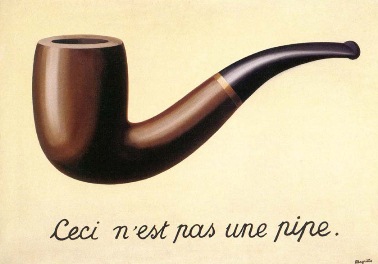
http://wetellstories.co.uk/stories/week3/
Fairytales:
of the stories available, fairytales appeared to be the most clear-cut in terms of its portrayal of women and men and the differences between them and the story... but that's the reason I liked this story. Because it's marvellously misleading in a number of ways. Just to start with, this story is not a single story but in fact 320 stories (that's a choice of four, times a choice of four, times a choice of five, times a choice of four, times a choice of four(discounting the names)). Of course being the person I am, I had to read every possible outcome for each choice to see how it affected the story.
The story begins with selecting the name of daughter and the King (Julia and Harry in my case), and goes on to depict the wicked King (and consequently ugly Prince), the greedy mother, the poor father, and the heroin to be made a victim (by the King), showing with great equality in my opinion, two wicked people of opposite sexes. and two downtrodden people of opposite sexes. Now however we'd use the King/Prince as a catalyst for great adventure: the avoidance of marriage (which in itself is a strong assertion of her rights as a woman).
In true brothers grimm style, this fairytale could be told to a child quite innocently yet have a very dark undertones throughout (unless you read the original stories). I do not deem the fact that our heroine is first used as a commodity to be a feminist issue, as contextually it makes sense if you make a few assumptions about where a fairytale might take place. Fairy tales (to my knowledge) are often placed in the mediaeval setting but do not take place in the dark ages (or at least it would be hard to pin a time scale down, as the 'fairytales' were passed down through word of mouth and folklore). Fairy tales exist in the time where it is feasible to have Knights, Kings, Princes and princesses (though granted often the damsel in distress) fighting as though in the days of yore. In this kind of time it is no secret that women would be seen as second class citizens (to perpetuate the idea is the different issue entirely). This being said the daughter protest at the Kings ' offer' of marriage, and thus begins series of choices.
The first set of choices involves a variety of animals followed by a description of set animals condition. In the next phase of the story, the animal evolves into a much grander version of itself or equivalent (eg. hen => Peacock) while the description of the animal changes to a poetic opposite (eg dirty => golden). This set of choices seems to have very little bearing on the narrations of the story itself.
The next set of choices involved a wise old poet, a drunken knave, the ugly Prince, an artful merchant and a mysterious goblin. This is where the story begins to be interesting. Each choice directly begins to affect the personality of our heroine. The old wise poet turns her personality into a kindly passerby ...he offers her wisdom. The drunken knave turns her personality to that of a strong woman willing to kill if needs be. The ugly Prince offers what he calls 'happiness' and turns her personality towards being meek and fleeing. The merchant offers her riches but at the price of being married and turns her personality to that of a woman who will not be pushed around. Lastly the goblin offers a cunning riddle and turns her personality towards being fiercely intelligent.
The riddle just for the sake of it:
"My first is in sugar and also in sweet,
My second's a legume, tasty to eat,
My third is myself, my fourth's an old chick,
My fifth's in an apple and also a brick,
My sixth just repeats what my fourth said above,
My seventh's a thousand, you will be my love,
My eighth's simply fifty, my ninth is a breeze,
If you follow my meaning you'll find it with ease.
My whole is a strange name, of that there's no doubt,
But though berries may lie, the truth it will out.
You may call me a thing but I swear I'm a man,
Now come and find me. That is, if you can."
Just in case anyone didn't get it and was wondering, I think the answer is spinankle or spinankln (but then he did say it was weird).
The next set of choices on offer strength, wisdom, ruthlessness and heartlessness (and can be seen to parallel in some ways what each of the men in the previous choices offered our heroine (with the exception of the last, which I believe was put in for a bit of fun). True to each choice, each auction turns her personality to an extreme of that traight. And just as before, each of these traits might well have been uncommon to the usual damsels in distress of some of the older stories.
But one has to ask, upon finally completing a quest to see the star maker, what is her reward for possessing these traits? For very depressing choices of ending.
One in which she committed murder and lived evermore with that knowledge, one in which she committed murder and was captured by the King and punished, one in which she'd grown too accustomed to a rich lifestyle and so lived out her days in misery and the final ending in which she simply lays down and submits to crushing depression and presumably death from pneumonia.
So all in all our heroine shows a number of possible personality traits (with no help from any man at all), as opposed to marrying an ugly person but being rich for the rest of her life (keep in mind that she had the option of being rich in one of the storys but had to be married to a man), and for these personality traits can never be happy given the possible endings.
Interestingly there doesn't seem to be one positive male in the entire story. This includes her father of which there is no mention of protestation to handing over his daughter. Even the wise old poet seems to only share in a relationship of mutual pity. One has to wonder, in this particular story is it even worth being a male or female?

 I often research things online before I buy it at a store, if it is something easily available. More obscure items (such as art-deco ceramics) I buy online from Ebay etc. If I do buy something online I like to see it first before I buy.
I often research things online before I buy it at a store, if it is something easily available. More obscure items (such as art-deco ceramics) I buy online from Ebay etc. If I do buy something online I like to see it first before I buy.

















